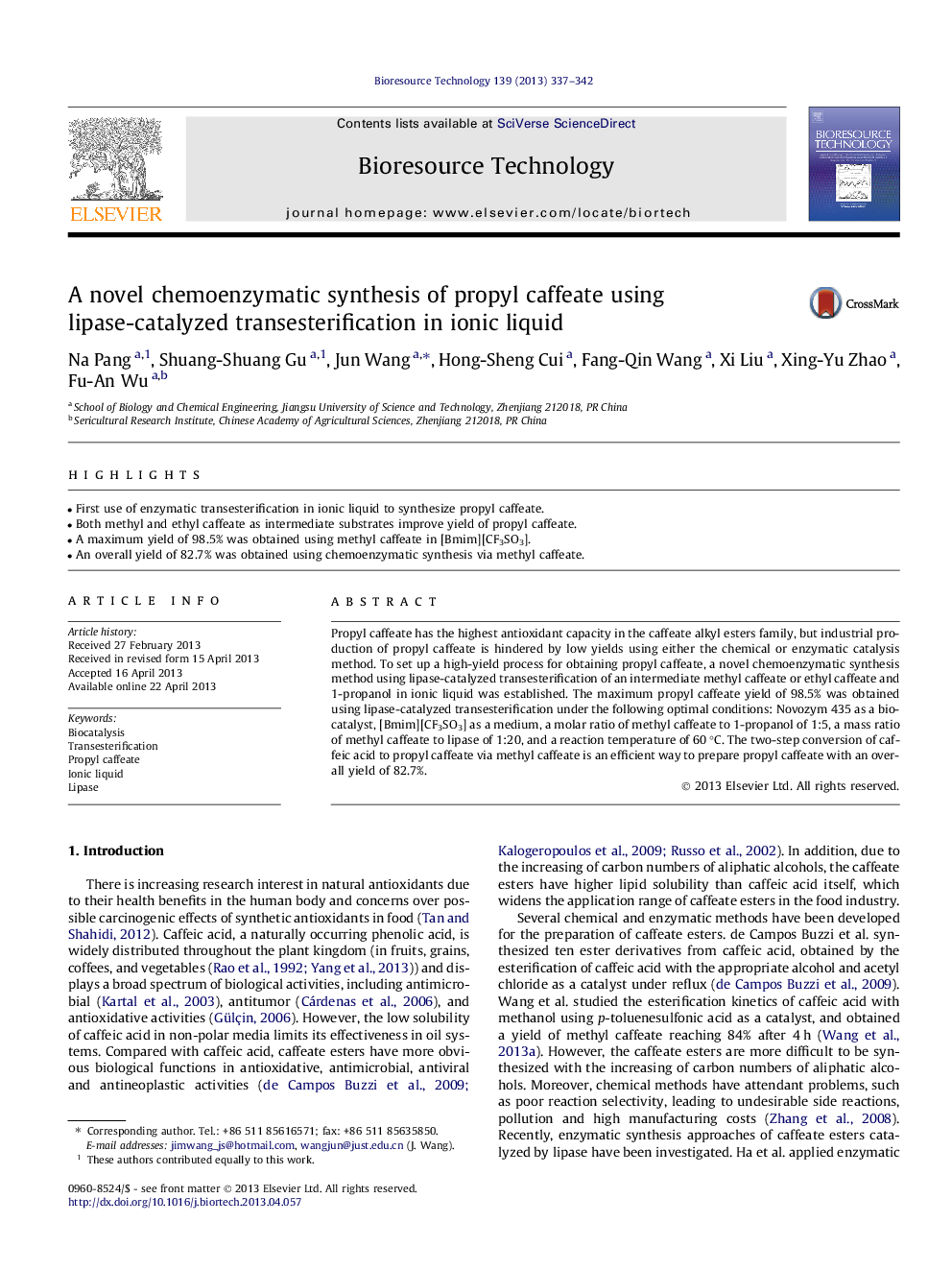| Article ID | Journal | Published Year | Pages | File Type |
|---|---|---|---|---|
| 7082637 | Bioresource Technology | 2013 | 6 Pages |
Abstract
Propyl caffeate has the highest antioxidant capacity in the caffeate alkyl esters family, but industrial production of propyl caffeate is hindered by low yields using either the chemical or enzymatic catalysis method. To set up a high-yield process for obtaining propyl caffeate, a novel chemoenzymatic synthesis method using lipase-catalyzed transesterification of an intermediate methyl caffeate or ethyl caffeate and 1-propanol in ionic liquid was established. The maximum propyl caffeate yield of 98.5% was obtained using lipase-catalyzed transesterification under the following optimal conditions: Novozym 435 as a biocatalyst, [Bmim][CF3SO3] as a medium, a molar ratio of methyl caffeate to 1-propanol of 1:5, a mass ratio of methyl caffeate to lipase of 1:20, and a reaction temperature of 60 °C. The two-step conversion of caffeic acid to propyl caffeate via methyl caffeate is an efficient way to prepare propyl caffeate with an overall yield of 82.7%.
Related Topics
Physical Sciences and Engineering
Chemical Engineering
Process Chemistry and Technology
Authors
Na Pang, Shuang-Shuang Gu, Jun Wang, Hong-Sheng Cui, Fang-Qin Wang, Xi Liu, Xing-Yu Zhao, Fu-An Wu,
